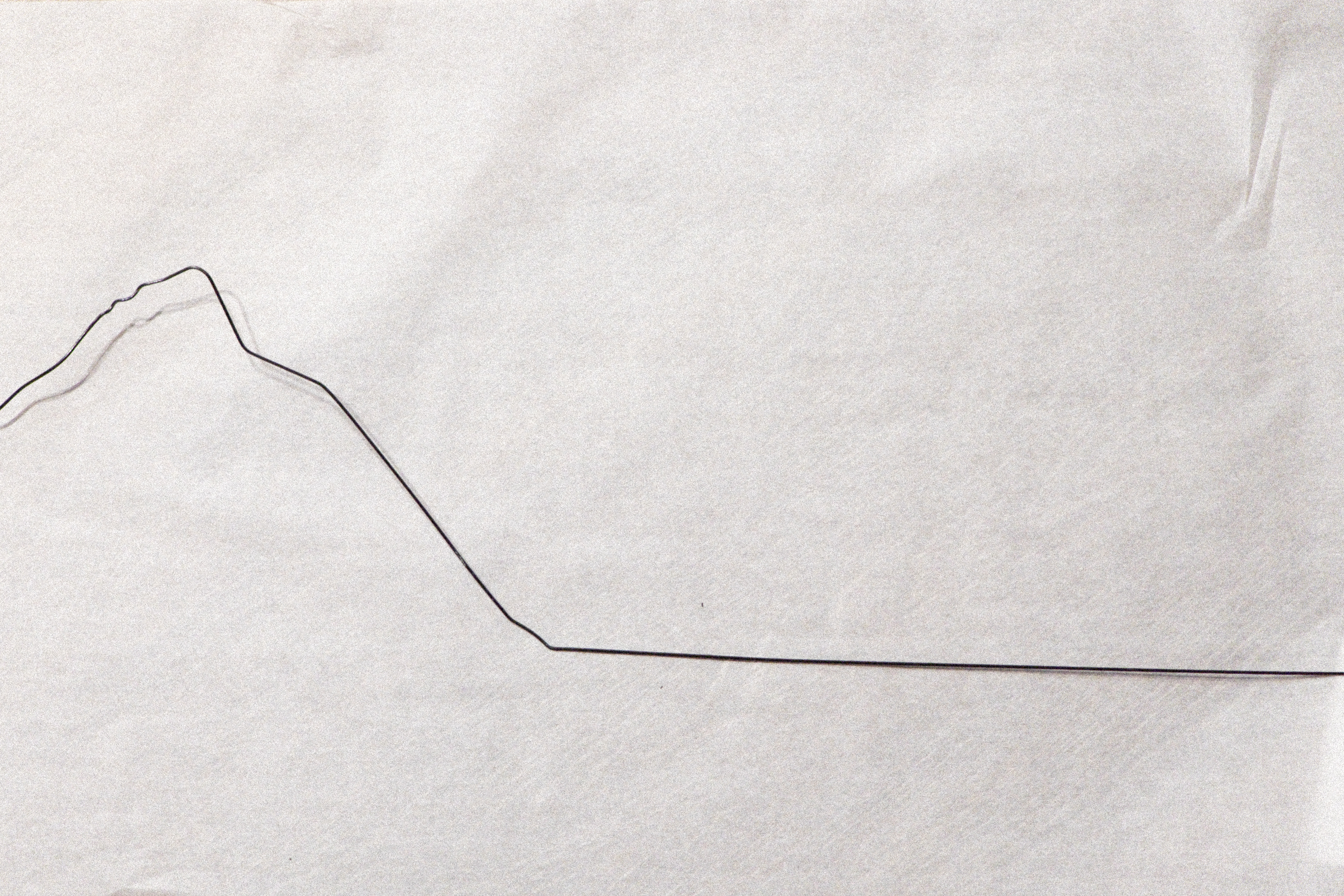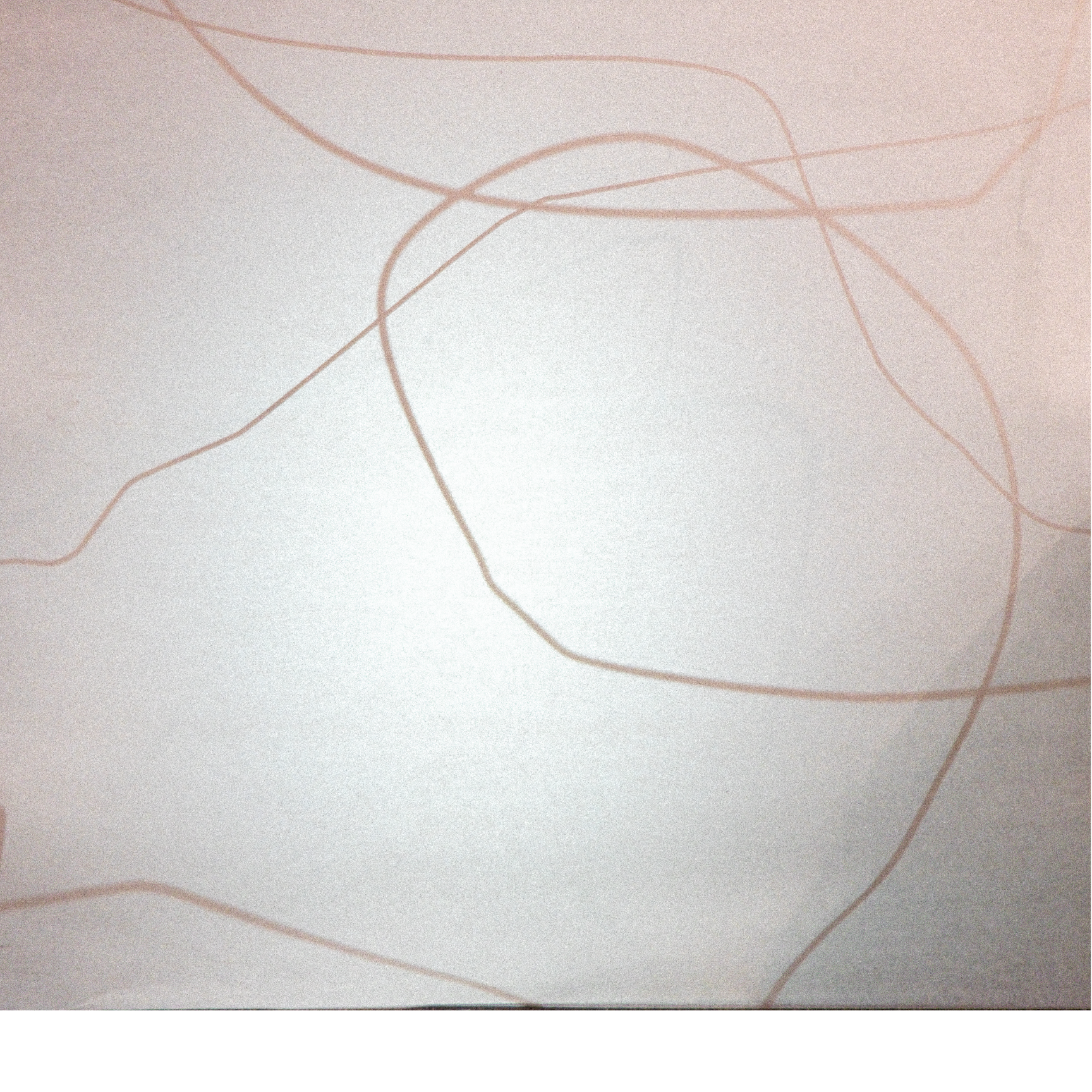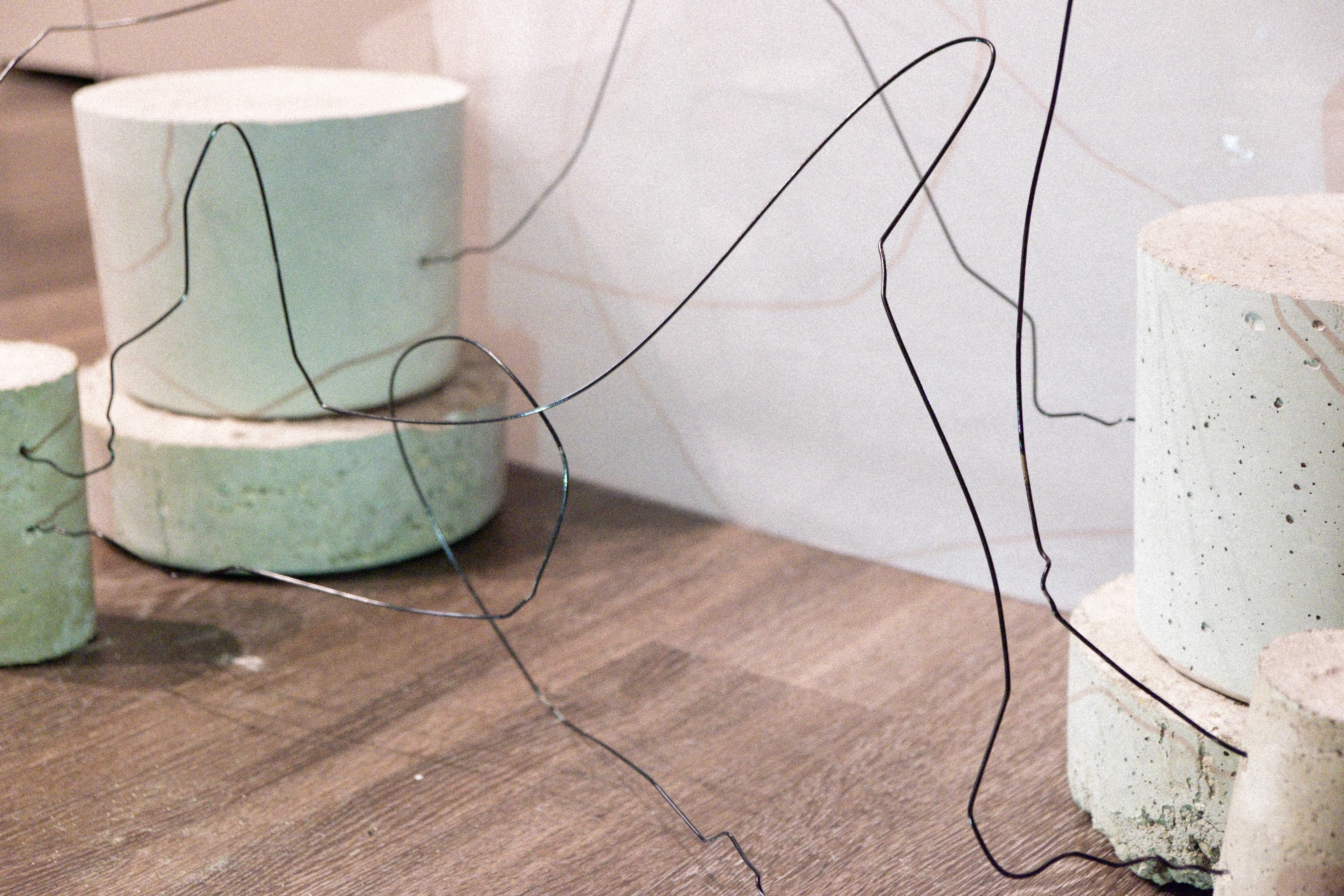Part 03: Inconsistent Grids is a process that deliberately allows for natural inconsistences and can be reproduced with varying results from a set of constraints.
FINAL ARTIFACT
Taking the line project further, I wanted to design a system that would provide constraints for its users in order to create a grid. I gave myself another set of obstructions to work within, these being materials and intention.
intention: a grid
materials: clear acrylic, concrete, wire hangers, light, trace paper, oil pastel
I wanted to keep my materials simple to maintain a focus on the process. The wire hangers make up the grid while the concrete houses the wires and holds up the acrylic sheet.
intention: a grid
materials: clear acrylic, concrete, wire hangers, light, trace paper, oil pastel
I wanted to keep my materials simple to maintain a focus on the process. The wire hangers make up the grid while the concrete houses the wires and holds up the acrylic sheet.
STEP 1
List of materials:
Areas of intentional variation included the containers I used as molds which varied in material and size. The amount of water I used varied for each of the molds.
- Quickrete Concrete Mix
-
water
-
2 2-Gallon plastic buckets
-
2 5-Gallon plastic buckets
-
2 small plastic tupaware container
-
4 cardboard cylinder containers
Areas of intentional variation included the containers I used as molds which varied in material and size. The amount of water I used varied for each of the molds.


STEP 2
I untwisted the wire hangers and straightened them out as much as I could. The wire hangers serve as a constraint in that it is nearly impossible to get them perfectly straight again. This not only prevents someone from creating a grid of straight lines, but also encourages them to bend the grid and play with form.
Once the cylinders were dry, it was time to drill holes into them in order to accommodate for the wires.
Once the cylinders were dry, it was time to drill holes into them in order to accommodate for the wires.




STEP 3
Now that there was a grid, the clear acrylic sheet served as a drawing board. I placed the acrylic sheet in front of the grid and covered it with trace paper. By shining a light from behind the grid, I was able to see its shadow.
It was then time to play.
The process the user goes through in interacting with the system encourages play and working within the constraints provided. They are able to manipulate the direction of light and the form of the wires. There is a balance in control as the designer. Because of the constraints, the user must let go, to an extent, of what the final outcome will be. However, they still have the ability to influence it while staying within the system’s boundaries.
Once the grid is made, it is up to the user how they wish to utilize the grid.
It was then time to play.
The process the user goes through in interacting with the system encourages play and working within the constraints provided. They are able to manipulate the direction of light and the form of the wires. There is a balance in control as the designer. Because of the constraints, the user must let go, to an extent, of what the final outcome will be. However, they still have the ability to influence it while staying within the system’s boundaries.
Once the grid is made, it is up to the user how they wish to utilize the grid.



CONCLUSION
The system serves a practical function as well as an experience. It is more about the experience of playing with the light and the form than it is about the final product. The imperfections of the grid can then be appreciated rather than avoided as they are a product of the process. In that lies the deliberate inconsistencies and because it has intention, there can be celebration. We can appreciate the beauty in the imperfections that are purposeful rather than by chance.




